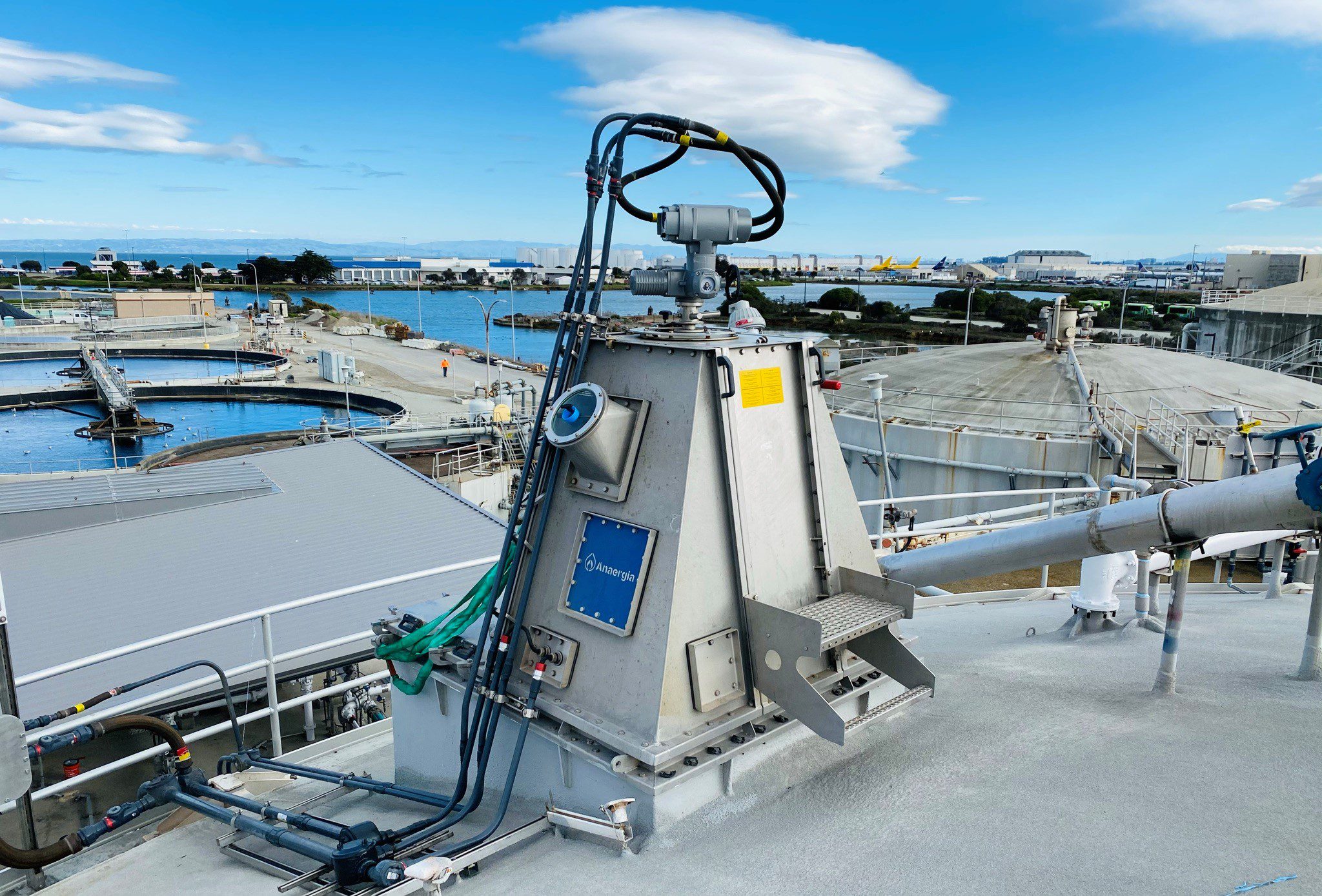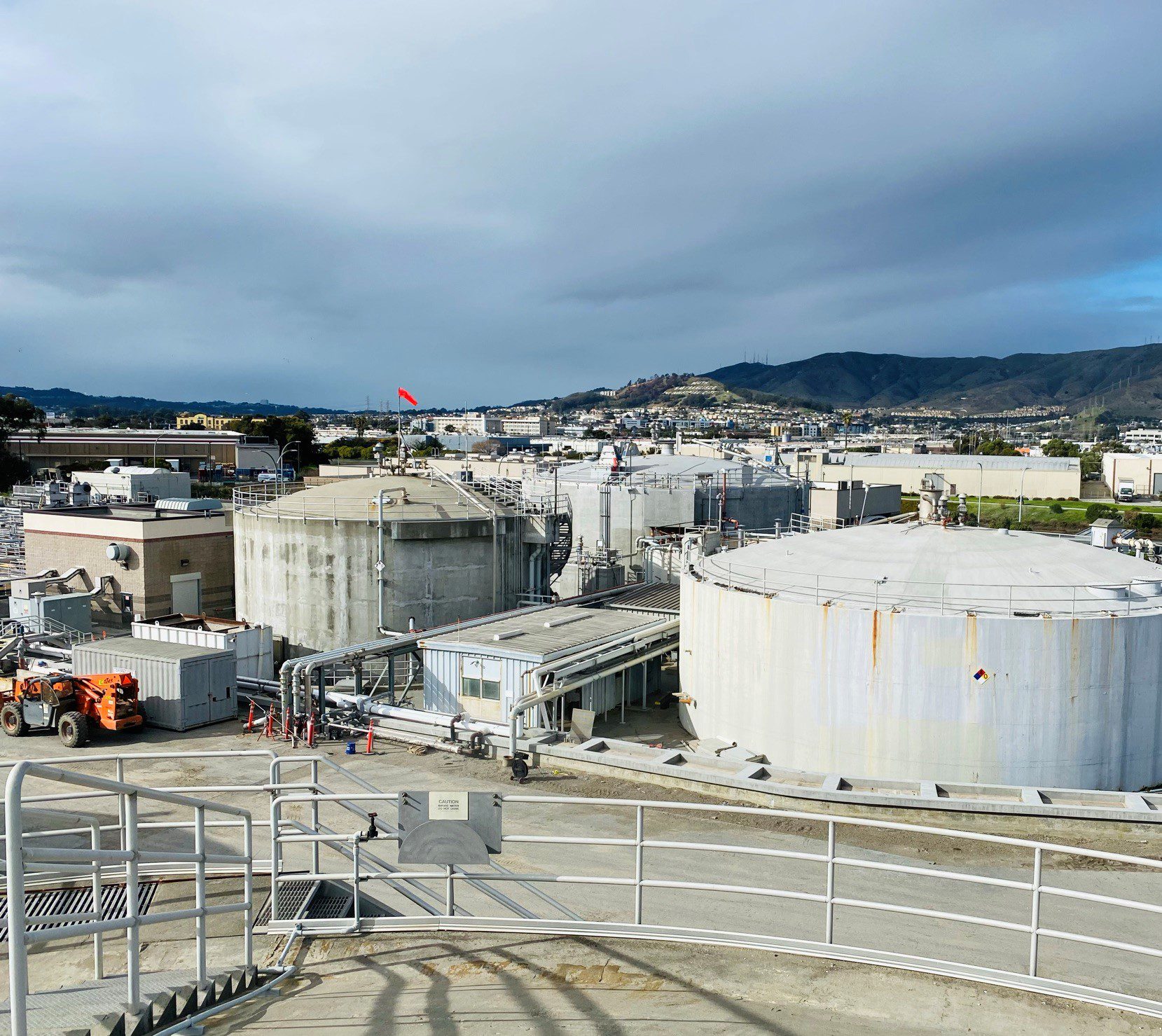Is High Solids Digestion the Best Solution for Your Wastewater Treatment Plant?
- July 14, 2023
- Anaergia Team

Your questions about high solids digestion answered.
Traditionally, anaerobic digestion at wastewater treatment plants has been implemented primarily as a way to stabilize and reduce the volume of recovered solids, cutting down on the amount of organic matter that utilities must manage. It’s still not uncommon for the resulting biogas to be flared rather than used for energy.
But municipal leaders and wastewater agency executives today increasingly recognize the value inherent in both their waste material and their infrastructure. They are looking to maximize both their biosolids and their digesters to create renewable energy and generate new revenue streams. At many of facilities, taking full advantage of these assets is enhanced by installing high solids anaerobic digestion systems. This article answers some of the most common questions from wastewater treatment plant management and operators about high solids anaerobic digestion.
Question: How is high solids anaerobic digestion different from typical anaerobic digestion?
Defined very simply, high solids digestion is an anaerobic digestion technique where water content of the material to be digested is decreased. Removing water from the digestate creates additional capacity for more solids in the anaerobic digestion tank, allowing a facility to readily adapt to load growth, or creating capacity for co-digestion of new imported feedstocks. Digester feed solids can be increased to up to 12%, translating to solids loading within the digester from conventional 2-3% total solids to 6%. This increased organic loading leads to significantly more biogas production in a given digester volume.
Anaergia’s high solids digestion solution, named Omnivore® for its ability to digest multiple types of feedstocks, uses a combination of technologies–thickening, low-speed high-torque mixers, and a unique service box that allows for maximum mixer control.
Question: When should high solids digestion (HSD) be considered for a wastewater facility?
Wastewater facilities should consider HSD when:
- Overhauling or upgrading an aging digester system. Like so much of our public infrastructure, many wastewater treatment plant digestion systems were built decades ago and need updates. In many cases, additional digestion capacity is required. The Omnivore high solids digestion system allows a wastewater plant to triple digestion capacity within existing digesters or with new digesters built at a fraction of the size.
- Load growth requires additional digestion. When agencies experience population or service-area growth, switching to high solids digestion is a solution that provides increased solids processing capacity within existing tankage.
- A small digester footprint is required. High solids digestion achieves necessary treatment throughput in a smaller area for those facilities that are tight on space.
- The facility needs to minimize capital expenditures. Because a high solids digestion system can add capacity in existing digesters with simple retrofits and allow for maximum digestion within a given digester size, facilities typically spend less capital to install this capability than adding more conventional digesters.
- There is a need for redundancy and other operational flexibility. Facilities often benefit from having more digestion capacity to provide operational flexibility, “future-proofing,” and peace of mind. Omnivore digesters can flex to accommodate higher solids loading when a digester needs to be taken offline for cleaning or repairs.
- Co-digestion of multiple feedstocks is desired. Wastewater treatment plants may be charged with managing agricultural or food waste slurry. High solids digestion systems were first developed to manage the high solids organic waste typically found in the agricultural sector and thus could handle any type or mix of feedstocks.
- There is a need or intention to reduce the facility’s reliance on external energy sources. Wastewater plants that aim to reduce reliance on outside energy sources—and thus need the capacity to digest more feedstock —can benefit from having the additional biogas produced through high solids digestion.
- There is a requirement or desire to reduce the facility’s carbon footprint. Digesting landfill-diverted food slurry or other organic waste can create carbon-negative fuel that ultimately cuts more greenhouse gas emissions than the facility itself creates. A great example of a mid-sized wastewater resource reclamation facility is the Victor Valley Wastewater Reclamation Authority facility in Victorville, California.
Question: Is high solids anaerobic digestion a proven technology?
Yes. High solids digestion technologies have been advancing in Europe for decades and are thoroughly proven. They are operated similarly to traditional anaerobic digestion systems and are highly functional and reliable. Thousands of HSD systems in use at facilities around the world.

Question: What are the benefits of using a high solids anaerobic digestion system at wastewater treatment plants?
A high solids digestion system provides many benefits. Compared to low solids anaerobic digestion, it allows for more feedstock to be processed within the same digester volume. This offers a wastewater facility the ability process more waste, add in various types of feedstock (such as food waste slurry), and produce more biogas. Because food waste and other organics are typically more viscous than sludge and create the need for additional digestion space, a high solids system is an ideal way to enable imported organics digestion.
Taking in additional feedstock allows the wastewater agency to bring in revenue in the form of tip fees, and the resulting increase in biogas may be used as fuel to add or boost electricity generation at the facility. Alternatively, the biogas may be upgraded to biomethane (renewable natural gas) and sold and transported via the natural gas pipeline system, providing another revenue stream for the agency or municipality.
Question: What are the components needed for a high solids anaerobic digestion system?
Anaergia’s Omnivore high solids digestion system includes a group of technologies that are used in combination to achieve improved digestion by increasing the solids content and powerful mixing. Omnivore’s main components includes a screw thickener to either pre-thickening of raw sludge before digestion or thickening of digestate in recuperative operation on a customizable basis; powerful submersible mixers with permanent synchronous magnet (PSM) motors that can be rotated, lowered and raised within the tank; and service boxes for the mixers that allow operators to carryout maintenance without taking the digester offline. The system allows for approximately three times the digestion capacity in the same volume of a traditional low-solids digester.
As the thickeners reduce digestate water content and the solids ratio increases, the digestate becomes significantly more viscous, and robust mixing becomes essential to ensure proper flow and maintain tank turnover rate. Anaergia’s submersible propeller mixer, the OmniMix™ is able to manage this viscosity with its gearless, direct drive permanent synchronous motor. Its highly efficient design allows it to typically operate well below 12.7 kW of connected load. Due to its power and efficiency, it is frequently compared to a Tesla dual synchronous motor.
The OmniMix’s low-speed, high-torque propeller provides significant primary flow, pushing material at about 30,000 gallons per minute. It does not rely on entrainment to achieve those flows, which gives it a significant advantage in high solids conditions. It also automatically senses changes in viscosity and adjusts torque correspondingly. And it can be operated intermittently–30 mins on/30 mins off, for example—to improve energy efficiency.
Lastly, Anaergia’s patented service box enables operators to reposition the mixer blades vertically and laterally via a motorized winch at the top. The service box allows operators to make these adjustments easily without taking the digester offline.
Question: How will a high solids digestion solution impact my AD operations?
While a high solids digestion system increases the volume of solids and other organics that can be processed by a facility, it also improves dewaterability. The thickening of solids via sludge screw thickeners reduces the amount of dewatering polymer needed or decreases the moisture content of the dewatered biosolids with the same polymer dosage..
A high solids digestion system can add flexibility in digester operation over weekends. Operators can increase screw thickening on weekdays, which can decrease digester volume enough such that less dewatering needs to occur on weekends, even while more feed with higher water content is added.
Operators also have remarkable flexibility in positioning and operating the OmniMix mixer. Anaergia’s patented service box allows operators to control the height of the mixer blades within the tank, the direction the mixers face, as well as speed and torque settings. The service box also makes it easy for operators to perform periodic maintenance on the mixers by removing them without having to take the digester offline.
Question: How much does it cost to implement high solids anaerobic digestion?
Implementing a solids digestion system can require significantly less capital than a traditional digestion system, simply because less digestion volume is required. Wastewater facilities can build fewer digesters or retrofit existing ones to achieve the same amount of digestion.
The cost of implementing a high-solids digestion solution varies depending on the size of the plant, whether imported organics will be co-digested, anticipated load growth, desired redundancy, and other factors. However, the initial upfront investment can be reduced or even eliminated when the project is financed through a public-private partnership. A public-private partnership (P3) creates a long-term agreement between the public wastewater agency and a private partner, with the private partner delivering and funding the capital asset and sharing the associated risks. In return for providing funding, the private partner(s) share some of any income created from the new or revamped capital asset, such revenues from renewable natural gas sales.
Question: What are the Operations and Maintenance requirements of a high solids digestion system?
Third-party analyses have indicated that Omnivore can save 25% in operating costs over a 10-year life. The savings are driven mostly due to sizable electricity savings of the mixing system as compared to both linear motion mixing and pump mix systems, as well as significantly reduced dewatering polymer requirements.
While some studies have noted high-solids systems can experience reduced biogas recovery, this is most often due to inferior mixing technologies. Hydraulic pumps and linear motion systems require far too much motor power to efficiently maintain content velocity.
By contrast, low-speed high-torque electric mixers like the OmniMix, keep contents moving faster and achieve more consistent content distribution throughout the digester. Anaergia guarantees a mixing standard of >90% of tank contents moving at or above 4 in/s (0.1 m/s) to prevent settling and maintain digester health. In addition, the mixers’ backwards-sweeping sickle-shaped propellers and automatic speed control work together to practically eliminate ragging and cavitation.
The Evolution of WWTPs: Becoming Resource Recovery Facilities
Society’s view of anaerobic digestion—and of digesters as a public asset—has evolved considerably since the solution was first employed in the wastewater sector. Today, anaerobic digestion is seen as far more than a solids reduction device. These solutions are being tapped for their ability to turn wastewater treatment plants into resource recovery centers. The use of high solids digestion technologies enables facilities to digest more sludge and co-digest multiple feedstocks to maximize biogas production. These tools are providing increased renewable energy for use onsite and beyond.
JOIN US IN THE FIGHT AGAINST CLIMATE CHANGE
Chat with us to discuss how we can work together to help communities, cities, industries to turn their waste into renewable fuel.

